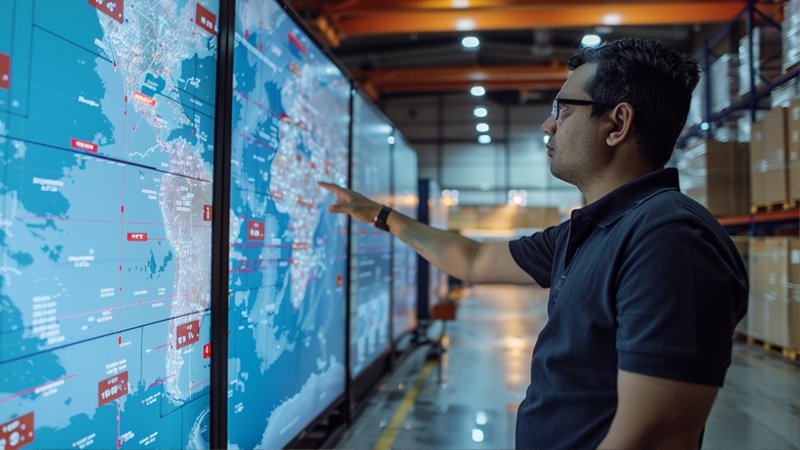
I recently discovered how importing goods via sea freight can simplify global trade and save money with a clear, step-by-step process.
Importing via sea freight involves confirming orders, proper packaging, detailed documentation, booking reliable freight, and tracking shipments closely.
Let's break down the process and explore practical tips together.
What are the detailed steps for importing goods via sea freight?
I found that a well-organized step-by-step process is key to a successful sea freight import.
Detailed steps include order confirmation, packaging, documentation, booking freight, customs clearance, and monitoring shipment progress.

When I first ventured into importing by sea, I learned that every step matters. First, you must confirm your orders with suppliers and ensure the products meet quality and regulatory standards. Next, proper packaging is critical—using durable materials and standardized box sizes can protect your goods during the long voyage. Once your products are packed, accurate documentation follows; this includes commercial invoices, packing lists, and export licenses. I always double-check these documents to prevent any hiccups at customs.
Booking a freight forwarder1 comes next. I look for a provider who offers transparent pricing and reliable tracking systems. After booking, your shipment is picked up and loaded onto a vessel. Throughout the journey, I monitor the shipment via real-time tracking platforms, which keep me updated on its status and help me quickly address any delays. Finally, once the shipment reaches its destination port, it goes through customs clearance2 before being delivered to your warehouse or final destination.
This comprehensive process not only ensures that your goods arrive safely but also minimizes unexpected costs and delays. Consistency in following each step builds trust with your logistics partners and smooths out the entire import process.
How can you select the right sea freight service provider?
I learned that choosing the right provider is crucial for ensuring timely delivery and cost-effective service.
Key criteria include the provider’s experience, network coverage, transparent pricing, and excellent customer support.

When selecting a sea freight provider, I start by researching companies with a proven track record in international shipping. Experience matters because seasoned providers know the ins and outs of various ports and can handle unexpected challenges efficiently. I also consider the provider’s network coverage3—having access to major shipping routes and reliable local agents can make a big difference in transit times.
Transparent pricing is another important factor. I always request detailed quotes that break down all charges, including fuel surcharges, handling fees, and any potential hidden costs. This helps me compare options and choose the one that fits my budget. Customer support is equally vital; a provider with responsive service can resolve issues promptly, which is especially important during long sea voyages. I often read customer reviews and case studies to gauge overall satisfaction.
Additionally, technology plays a role. Providers that offer real-time tracking and automated notifications help me stay informed and manage my shipments better. By weighing these factors, I can confidently select a sea freight service that aligns with my needs.
| Selection Factor | What to Look For |
|---|---|
| Experience | Proven track record and industry expertise |
| Network Coverage | Extensive global routes and reliable local agents |
| Transparent Pricing | Detailed, clear quotes with no hidden fees |
| Customer Support | Responsive service and proactive problem-solving |
What procedures must you follow for customs clearance and inspections in sea freight?
I discovered that strict adherence to customs procedures and thorough documentation is vital for smooth clearance.
Proper paperwork, detailed inspections, and compliance with international regulations ensure hassle-free customs clearance.

In my experience, the customs clearance process is one of the most critical steps when importing via sea freight. The journey starts with accurate documentation4. I ensure that every shipment comes with complete commercial invoices, packing lists, and necessary export licenses. Missing or incorrect documents can lead to delays, so attention to detail is key.
Once your shipment arrives at the destination port, customs officials inspect the cargo. This process can involve physical inspections and verification of the paperwork. I always work closely with my freight forwarder to ensure that any questions or discrepancies are addressed promptly. It’s also important to understand the specific regulations of the destination country, as requirements can vary significantly. For instance, some goods might need additional certifications or permits.
To avoid costly delays, I maintain open communication with my customs broker and freight provider. They help ensure that all procedures are followed and that any issues are resolved before they escalate. This proactive approach not only speeds up clearance but also minimizes unexpected fees or penalties.
| Clearance Procedure | Key Detail |
|---|---|
| Documentation | Accurate invoices, packing lists, licenses |
| Physical Inspection | Verification of cargo condition and contents |
| Regulatory Compliance | Adherence to destination country’s rules |
| Communication | Ongoing coordination with brokers and agents |
How can you optimize sea freight processes to reduce costs?
I learned that optimizing sea freight involves leveraging technology, bulk shipping, and smart scheduling to drive down costs.
Optimization strategies include consolidating shipments, negotiating better rates, and using real-time tracking to manage delays effectively.

To reduce sea freight costs, I focus on several key strategies. First, consolidating shipments5 can significantly lower per-unit costs. By grouping smaller orders together, you maximize container space and reduce handling fees. I often negotiate with suppliers to coordinate shipments so that the container is filled, which leads to bulk rate discounts.
Next, negotiating better rates6 with freight forwarders is crucial. I compare multiple quotes and use my shipping history as leverage. Providers who see you as a regular customer are often more willing to offer discounts. Technology also plays an important role in cost optimization. Real-time tracking systems allow me to monitor shipments closely, which helps in managing delays and adjusting schedules on the fly. This proactive management reduces the likelihood of costly demurrage fees.
Scheduling shipments during off-peak times can also yield savings. During peak seasons, demand is high, and rates tend to spike. Planning ahead to ship during quieter periods often results in lower costs. Moreover, I regularly review my shipping data to identify patterns and bottlenecks, enabling continuous improvement in my logistics strategy.
| Optimization Strategy | Benefit |
|---|---|
| Shipment Consolidation | Lower per-unit cost and reduced fees |
| Negotiation | Better rates through comparison and loyalty |
| Technology Integration | Real-time tracking reduces delays and fees |
| Flexible Scheduling | Off-peak shipping lowers costs |
By implementing these strategies, I have been able to optimize my sea freight processes, resulting in significant cost savings and improved efficiency.
Conclusion
Effective sea freight import relies on meticulous steps, clear customs compliance, and smart cost optimization.
-
Choosing the right freight forwarder can significantly impact your shipping experience. Discover tips and insights to make an informed choice. ↩
-
Understanding customs clearance is crucial for smooth import processes and avoiding delays. Explore this link to learn more. ↩
-
Exploring network coverage can reveal how it impacts delivery efficiency and reliability in freight services. ↩
-
Accurate documentation is crucial for successful shipping. Learn why it matters and how to ensure compliance. ↩
-
Exploring this resource will provide insights into how consolidating shipments can lead to significant cost savings and efficiency in logistics. ↩
-
This link will offer valuable tips and strategies for negotiating better rates, helping you save money on shipping costs. ↩




